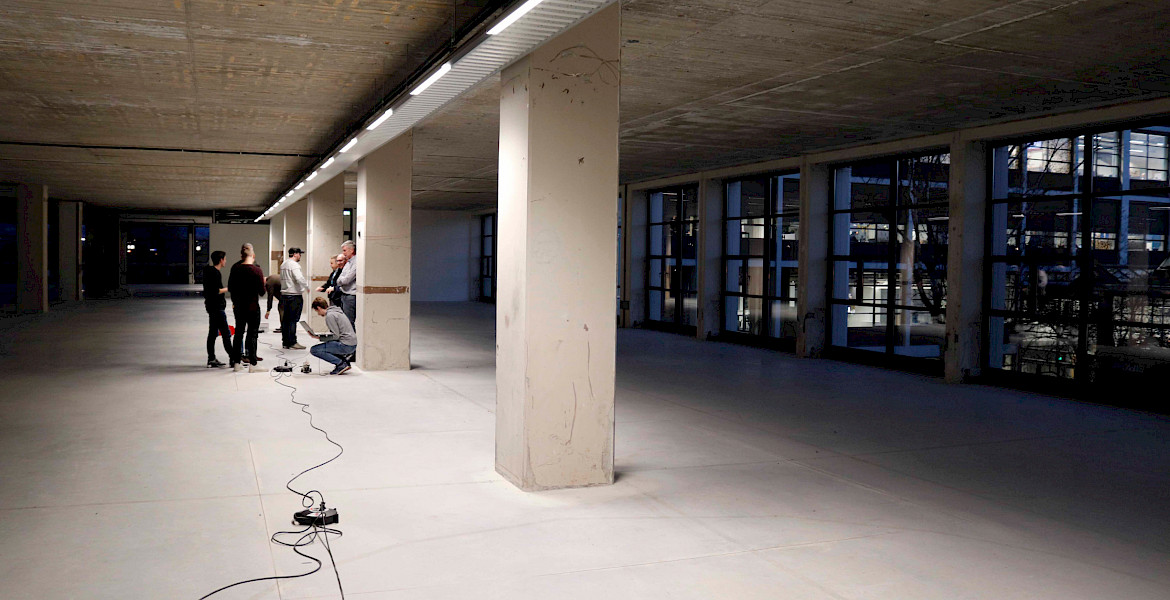Ultra-wide band (UWB) is a wireless technology that enables the transmission of many data over tens of meters. UWB is also applicable to position devices in a building. The device can be tracked very accurately using anchors and tags. A tag moves between its anchors, usually 3 anchors are used for 2D space positioning, while 4 anchors are required for 3D space positioning.
In the Fontys ICT research group, several measurements with UWB were conducted with UWB technologies’ Decawave and Pozyx. Decawave UWB to tag goods in nursing homes to enable the finding of ‘lost’ goods in these institutes. It was identified as a more accurate, as well as being more expensive technology than Bluetooth.
More recently, Pozyx UWB was applied for indoor positioning of robots. Indoor positioning is important to know the actual position of an AGV more accurate and to compare this position with the expected position of the robot. A student group did measurements as part of the Let’s Move IT project. Static measurement tests were done to find the settings that had the highest impact on (average) accuracy. Especially, Gain, Bitrate and Preamble Length of UWB device are important parameters for positioning. It was also found that moving objects, like a robot, could be traced with a random error of ~12 cm.
The UWB-research continued with a student group under the guidance of Here Technologies. They focused on measuring the capabilities of UWB. The goal was to find the trade-off between accurate indoor positioning, while limiting the setup cost. Of course, the amount of devices that is needed to cover an office floor depends on the size of the floor. The recommended distance between tags is about 20 meters to maintain a proper connection that enables accurate reading of data of the tags with an error margin of ~25cm. Various situations will impact the connection between tag and anchors. Concrete walls do reduce signal strength, as well as decrease the accuracy of the measurement, while glass walls, and glass wall do hardly have an impact on the signals. Furthermore, anchors should be positioned on the ceiling in a square grid. The width of the mazes in this grid depend on the height of anchors, to have a good connection. To reduce the amount of devices the anchors can be placed in a line. The device to be tracked is only visible in this one dimension , when the robot is going forward or backwards. For simple one-way tracking this method is the cheapest. To be able to track the robot in more directions, than this one axis, more anchors need to be placed.





